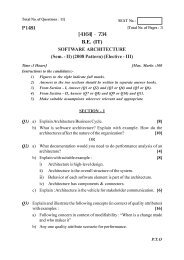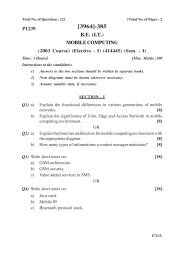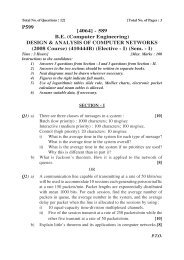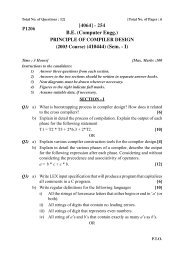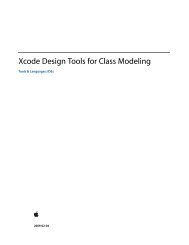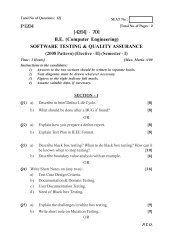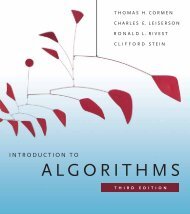Cloud Computing and SOA Convergence in Your Enterprise: A Step ...
Cloud Computing and SOA Convergence in Your Enterprise: A Step ...
Cloud Computing and SOA Convergence in Your Enterprise: A Step ...
Create successful ePaper yourself
Turn your PDF publications into a flip-book with our unique Google optimized e-Paper software.
What the Heck Is <strong>SOA</strong>, <strong>and</strong> Why Should I Care 5<br />
ration layer to form solutions. Consider<strong>in</strong>g that such an enterprise typically<br />
means hundreds <strong>and</strong> sometimes thous<strong>and</strong>s of systems, this project could<br />
take many years.<br />
Small <strong>SOA</strong> is just an <strong>in</strong>stance of a big <strong>SOA</strong>. Small <strong>SOA</strong> is still <strong>SOA</strong> but has<br />
well-def<strong>in</strong>ed objectives, a time box, <strong>and</strong> a core return on <strong>in</strong>vestment that must<br />
be met. The lesson here is to leverage small <strong>SOA</strong> to get to big <strong>SOA</strong>. For <strong>in</strong>stance,<br />
you could build a partner portal us<strong>in</strong>g <strong>SOA</strong> approaches that you can<br />
st<strong>and</strong> up <strong>in</strong> 6 months, with a return on <strong>in</strong>vestment of only three months—<br />
clear benefit <strong>and</strong> a small <strong>and</strong> doable project that occurs with<strong>in</strong> a year’s time.<br />
While small <strong>SOA</strong> seems to be work<strong>in</strong>g, big <strong>SOA</strong> has largely been ab<strong>and</strong>oned<br />
as too complex <strong>and</strong> too expensive to pursue. The reality is that you<br />
need both, but you need to know how to leverage both. Hold on to that<br />
thought for now. The topic of <strong>SOA</strong> is revisited many times <strong>in</strong> this book.<br />
What the Heck Is <strong>SOA</strong>, <strong>and</strong> Why Should I Care<br />
First, let’s put forth my def<strong>in</strong>ition of <strong>SOA</strong> so we have a foundation to work<br />
from.<br />
An <strong>SOA</strong> is a strategic framework of technology that allows all <strong>in</strong>terested<br />
systems, <strong>in</strong>side <strong>and</strong> outside of an organization, to expose <strong>and</strong><br />
access well-def<strong>in</strong>ed services, <strong>and</strong> <strong>in</strong>formation bound to those services,<br />
that may be further abstracted to process layers <strong>and</strong> composite<br />
applications for solution development. In essence, <strong>SOA</strong> adds the<br />
agility aspect to architecture, allow<strong>in</strong>g us to deal with system changes<br />
us<strong>in</strong>g a configuration layer rather than constantly hav<strong>in</strong>g to redevelop<br />
these systems.<br />
The primary benefits of an <strong>SOA</strong> <strong>in</strong>clude<br />
1. Reuse of services <strong>and</strong> behaviors, or the ability to leverage application<br />
behavior from application to application without a significant amount<br />
of recod<strong>in</strong>g or <strong>in</strong>tegration. In other words, <strong>SOA</strong> enables use of the same<br />
application functionality (behavior) over <strong>and</strong> over aga<strong>in</strong> without hav<strong>in</strong>g<br />
to port the code, leverag<strong>in</strong>g remote application behavior as if it existed<br />
locally.<br />
2. Agility, or the ability to change bus<strong>in</strong>ess processes on top of exist<strong>in</strong>g services<br />
<strong>and</strong> <strong>in</strong>formation flows, quickly <strong>and</strong> as needed, to support a chang<strong>in</strong>g<br />
bus<strong>in</strong>ess.



